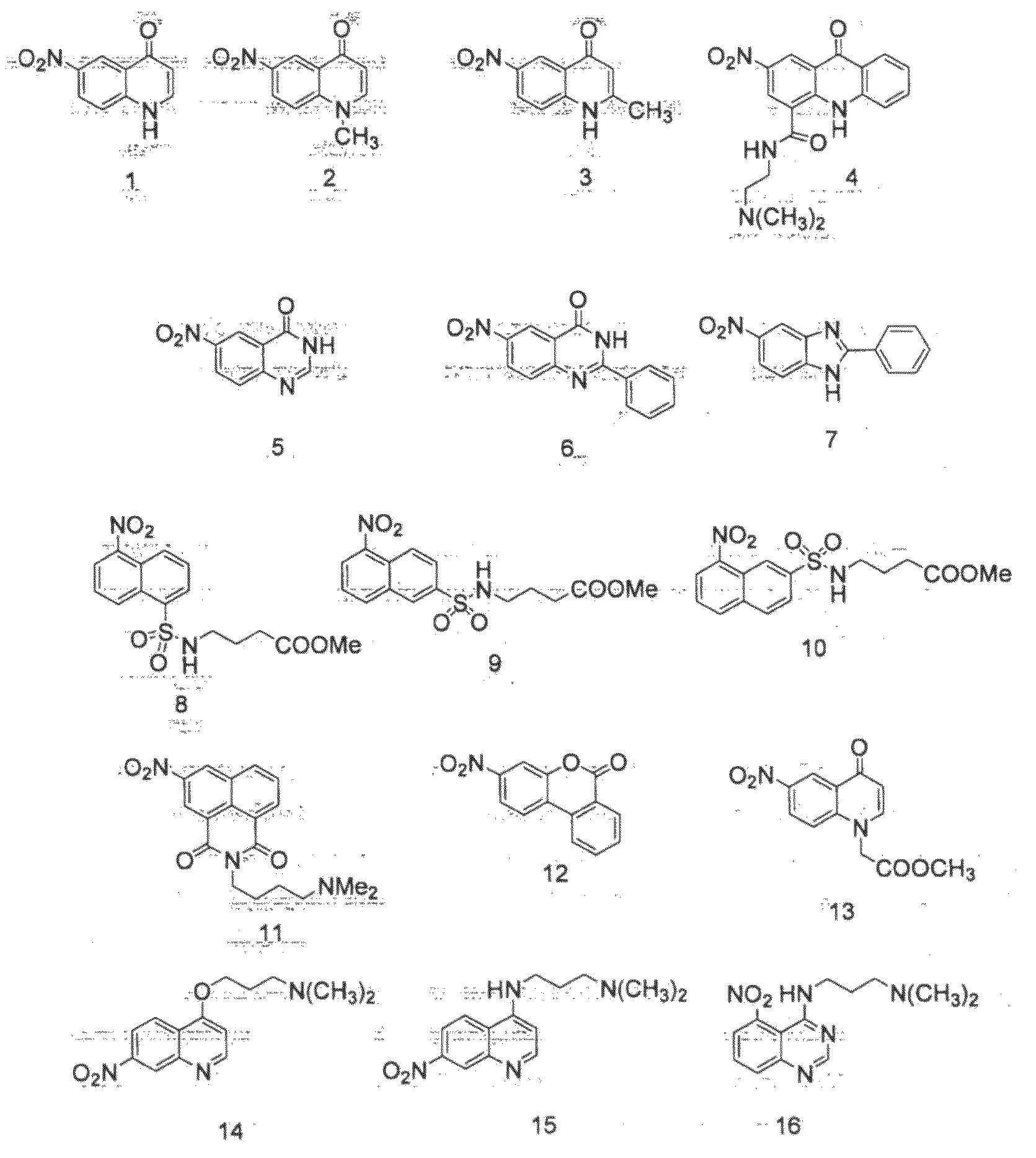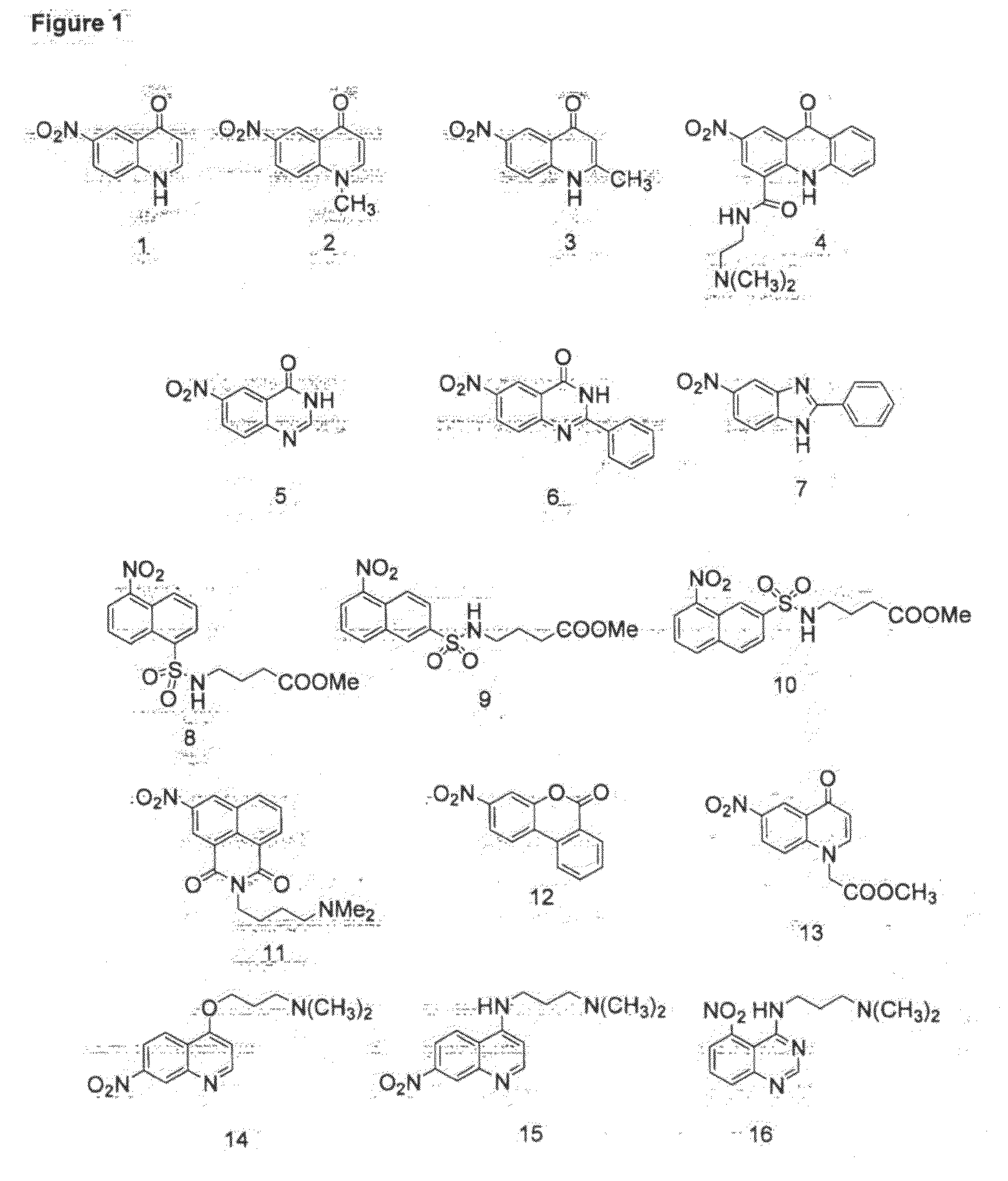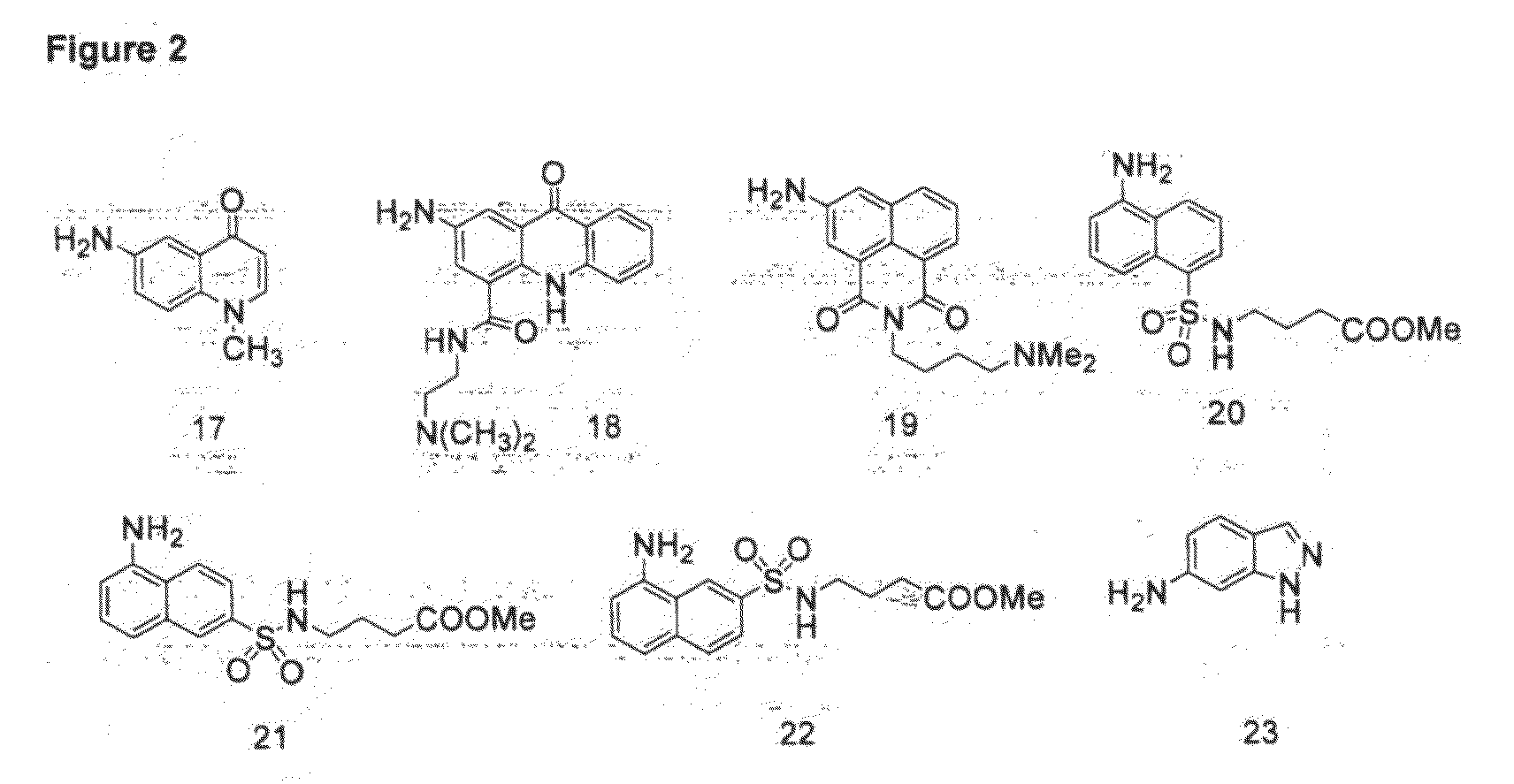Method for the Fluorescent Detection of Nitroreductase Activity Using Nitro-Substituted Aromatic Compounds
a technology of nitroreductase activity and fluorescent detection, which is applied in the direction of material analysis, instruments, biochemistry apparatus and processes, etc., can solve the problems of difficult quantitative diagnostic studies, inability to assay for more than one reporter enzyme, and inefficiency and laboriousness of assaying
- Summary
- Abstract
- Description
- Claims
- Application Information
AI Technical Summary
Benefits of technology
Problems solved by technology
Method used
Image
Examples
example 1
Method of Detecting E. Coli Nitroreductase (nfsB) Reporter Gene Activity in Intact Cells
[0124]The human breast cancer cell line (MDA231WT) and a clonal derivative (MDA231NTR) engineered to express the reporter gene E. coli nitroreductase (nfsB) under the control of a constitutive promoter were seeded into 96-well plates at a density of 1×105 cells / well. When samples were equilibrated to 37° C., 5% CO2 for 2 hr and compounds 1 to 15 (FIG. 1) were added to a final concentration of 100 μM for 4 hr. Test groups were cell-free culture media alone (control), MDA231WT and MDA231NTR. The fluorescence signal was monitored at an excitation wavelength of 355 nm and emission wavelength of 460 nm (355 / 460) except for compounds 4 and 11 that were monitored at 405 / 585 and compounds 8 and 10 that were monitored at 355 / 585 and 355 / 535 respectively (FIG. 1). No fluorescence was observed in either the cell-free control or parental MDA231WT containing cultures. Compounds 1-15 inclusive gave rise to a f...
example 2
Method of Detecting Human Aerobic Nitroreductase Activity
[0126]The human breast cancer cell line (MDA231WT) and a clonal derivative (MDA231DTD) engineered to express the human aerobic reductase, NAD(P)H dehydrogenase quinone 1 (DT-diaphorase; NQO1) under the control of a constitutive promoter were seeded into 96-well plates at a density of 1×105 cells / well. When samples were equilibrated to 37° C., 5% CO2 for 2 hr and compounds 1 to 15 were added to a final concentration of 100 μM for 4 hr. Test groups were cell-free culture media alone (control), MDA231WT and MDA231DTD. The fluorescence signal was monitored at 355 / 460 except for compounds 4 and 11 that were monitored at 405 / 585 and compounds 8 and 10 that were monitored at 355 / 585 and 355 / 535 respectively (FIG. 5). No detectable fluorescence was observed in either the control or parental MDA231WT containing cultures. Compounds 1 and 3 gave rise to a fluorescent signal specifically in the presence of human NQO1 expression.
[0127]In a...
example 3
Method of Detecting Human Nitroreductase Activity Under Anoxia
[0128]A clonal derivative of the human breast cancer cell line (MDA231P450R), engineered to overexpress the human anaerobic reductase, NADPH cytochrome P450 reductase (CYPOR) under the control of a constitutive promoter were seeded into 96-well plates at a density of 1×105 cells / well. When samples were equilibrated to 37° C., 5% CO2 for 2 hr under 95% N2 and compounds 1 to 15 were added to a final concentration of 100 μM for 4 hr. Test groups were cell-free culture media alone (control), MDA231P450R under normoxic (air) and anoxic (N2) conditions. The fluorescence signal was monitored at 355 / 460 except for compounds 4 and 11 that were monitored at 405 / 585 and compounds 8 and 10 that were monitored at 355 / 585 and 355 / 535 respectively (FIG. 7). No detectable fluorescence was observed in either the control or aerobic MDA231P450R containing cultures. Compounds 1-5 and 10-15 gave rise to a fluorescent signal specifically in th...
PUM
| Property | Measurement | Unit |
|---|---|---|
| excitation wavelength | aaaaa | aaaaa |
| excitation wavelength | aaaaa | aaaaa |
| excitation wavelength | aaaaa | aaaaa |
Abstract
Description
Claims
Application Information
 Login to View More
Login to View More - R&D
- Intellectual Property
- Life Sciences
- Materials
- Tech Scout
- Unparalleled Data Quality
- Higher Quality Content
- 60% Fewer Hallucinations
Browse by: Latest US Patents, China's latest patents, Technical Efficacy Thesaurus, Application Domain, Technology Topic, Popular Technical Reports.
© 2025 PatSnap. All rights reserved.Legal|Privacy policy|Modern Slavery Act Transparency Statement|Sitemap|About US| Contact US: help@patsnap.com



